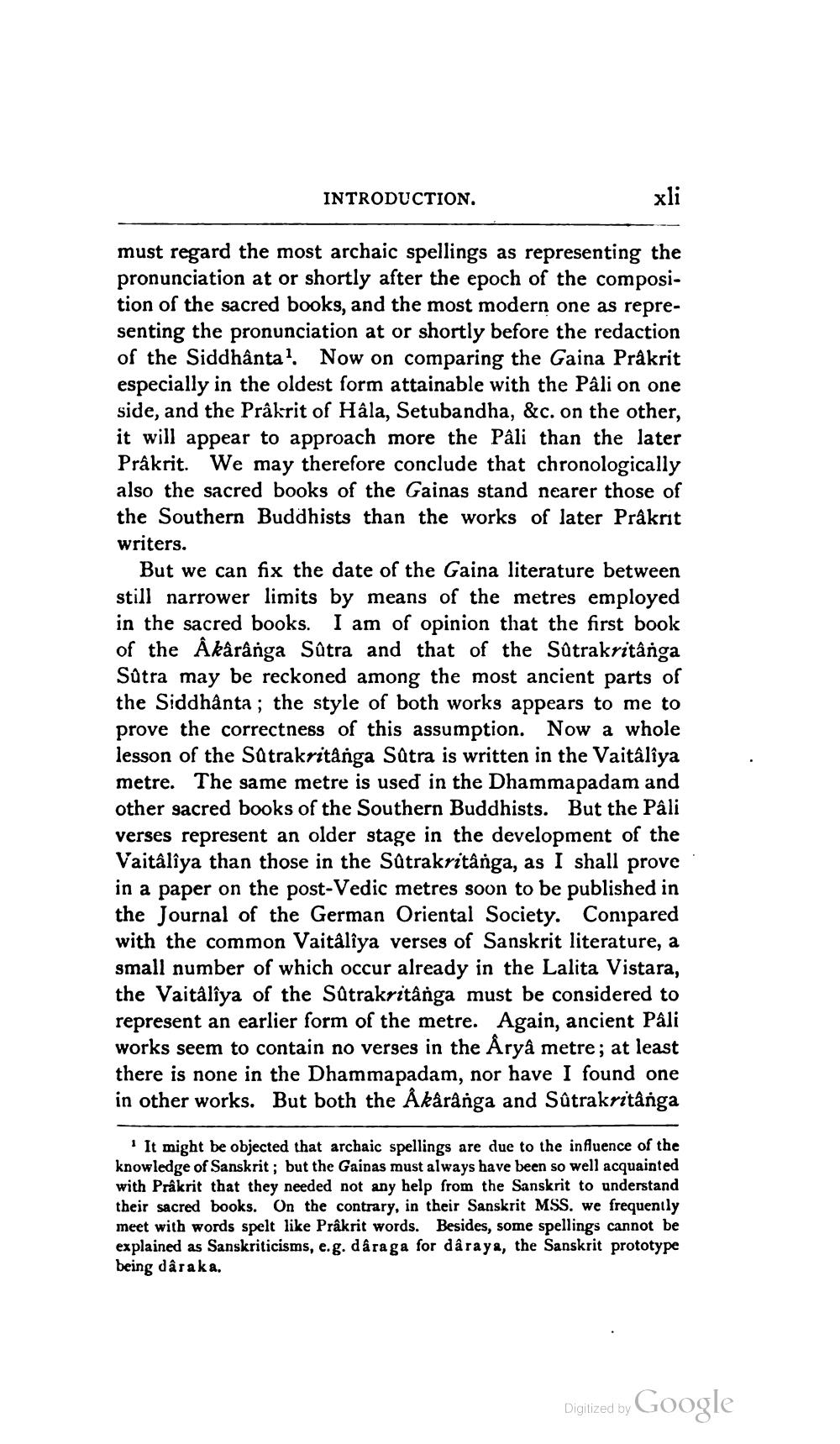________________
INTRODUCTION.
xli
must regard the most archaic spellings as representing the pronunciation at or shortly after the epoch of the composition of the sacred books, and the most modern one as representing the pronunciation at or shortly before the redaction of the Siddhanta?. Now on comparing the Gaina Prakrit especially in the oldest form attainable with the Pâli on one side, and the Prakrit of Hâla, Setubandha, &c. on the other, it will appear to approach more the Pâli than the later Prâkrit. We may therefore conclude that chronologically also the sacred books of the Gainas stand nearer those of the Southern Buddhists than the works of later Prakrit writers.
But we can fix the date of the Gaina literature between still narrower limits by means of the metres employed in the sacred books. I am of opinion that the first book of the Akârânga Sutra and that of the Sûtrakritânga Sūtra may be reckoned among the most ancient parts of the Siddhanta; the style of both works appears to me to prove the correctness of this assumption. Now a whole lesson of the Sutrakritânga Sutra is written in the Vaitaliya metre. The same metre is used in the Dhammapadam and other sacred books of the Southern Buddhists. But the Pâli verses represent an older stage in the development of the Vaitâlîya than those in the Satrakritânga, as I shall prove in a paper on the post-Vedic metres soon to be published in the Journal of the German Oriental Society. Conipared with the common Vaitâlîya verses of Sanskrit literature, a small number of which occur already in the Lalita Vistara, the Vaitâlîya of the Satrakritânga must be considered to represent an earlier form of the metre. Again, ancient Pali works seem to contain no verses in the Aryâ metre; at least there is none in the Dhammapadam, nor have I found one in other works. But both the Åkaranga and Sûtrakritânga
* It might be objected that archaic spellings are due to the influence of the knowledge of Sanskrit; but the Gainas must always have been so well acquainted with Prâkrit that they needed not any help from the Sanskrit to understand their sacred books. On the contrary, in their Sanskrit MSS. we frequently meet with words spelt like Prâkrit words. Besides, some spellings cannot be explained as Sanskriticisms, e.g. daraga for dâraya, the Sanskrit prototype being dâraka.
Digitized by Google




